As the leaves start to fall from the trees, we can often forget how rushed the summer gardening season is. The cooler weather makes many of us long for a lush garden again. The good news is that you don’t have to wait until the following spring to achieve this goal! It is possible to maintain a flourishing garden, even in the fall and winter. The key is to select plants that enjoy cooler weather and will thrive (or at least survive) in the winter. We have collected a list of 15 things to plant in November so you can get started.
1. Beets
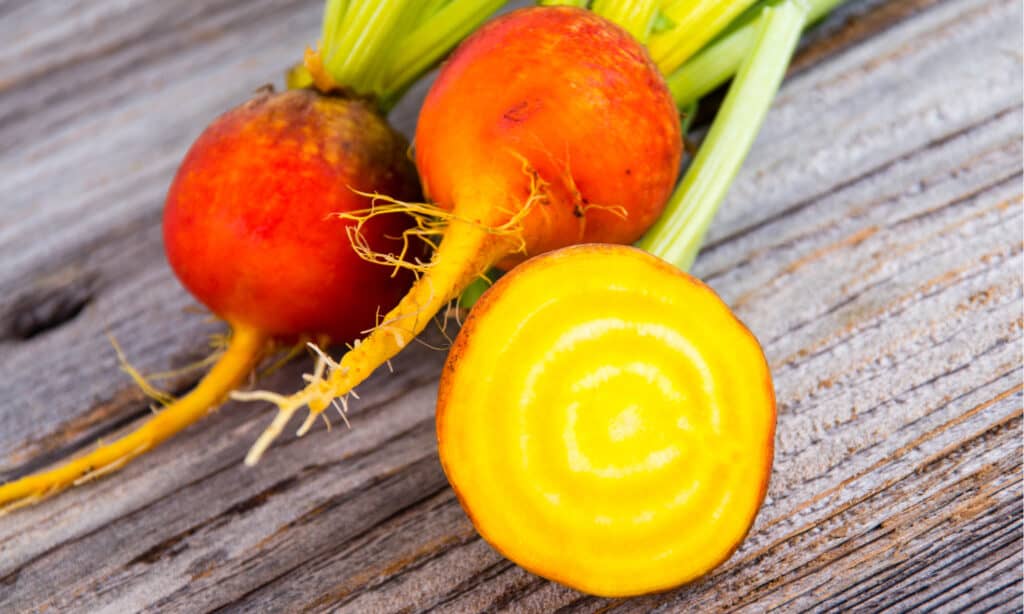
Beets can survive frosts and freezes.
©julie deshaies/Shutterstock.com
Root vegetables (like beets) are an ideal item to plant in November. They grow quickly, and the leaves are edible as baby greens while you wait for the roots to grow. Beets can withstand freezing weather without any damage to the plant. The most important factor to consider is sunlight. While this vegetable can handle cold, it will not thrive without at least six hours of direct sunlight daily.
2. Blueberries

Blueberries are best planted in the fall to ensure their roots can get established.
©iStock.com/Nadya So
Fall is actually the ideal time to plant fruit like blueberries. These plants require plenty of colder weather for proper root growth. So, getting them in the ground before winter hits offers plenty of time for this process to take place. Choose a garden location that has more acidic soil since blueberries prefer that type of environment. Once you transplant your plant, take the time to water and mulch it thoroughly.
3. Broccoli
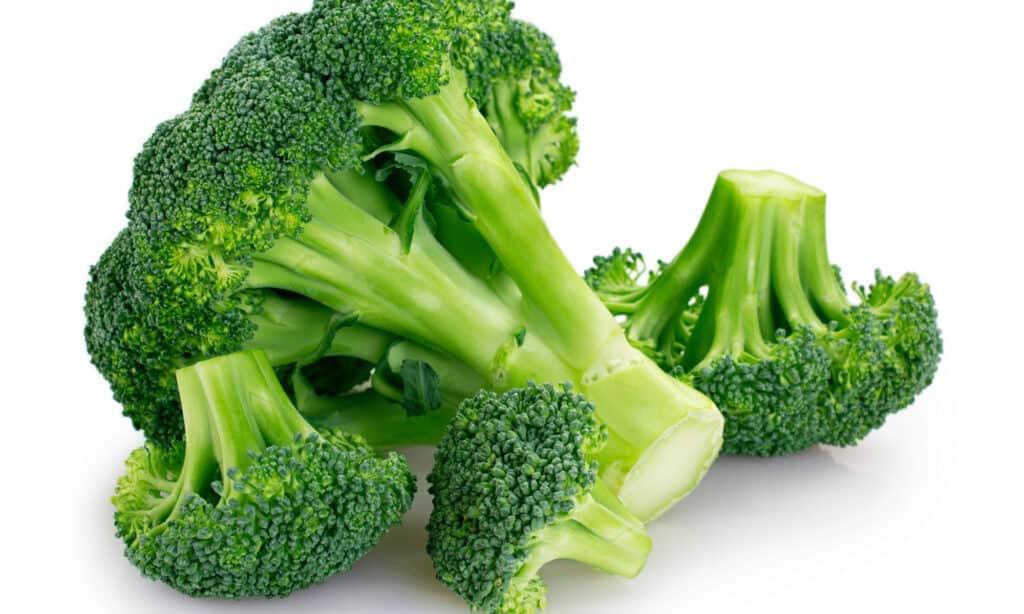
All broccoli varieties will survive into the winter.
©Valery121283/Shutterstock.com
Another cold-hardy vegetable is broccoli. While it isn’t necessarily everyone’s favorite to eat, it is a viable consideration for November planting. Broccoli requires cooler weather to thrive and develop, so direct sowing the seeds before the ground freezes will ensure it gets that preferred temperature. All broccoli varieties will survive into the winter. However, one interesting option to plant in November is sprouting broccoli. It will develop its root system throughout the winter season and provide delicious food in the spring.
4. Carrots

Carrots handle cold weather exceptionally well.
©Anastasi Mulyukova/Shutterstock.com
Many people only think about growing carrots in the height of summer while the entire garden is thriving. However, this versatile root vegetable handles cold weather exceptionally well. You can directly sow carrot seeds in the fall for a bountiful winter harvest. But, like beets, they require a minimum of six hours of direct sunlight daily. They may not thrive if you live in a more northern region.
5. Garlic

Garlic requires cold weather for proper root growth.
©Mikhail_Nau/Shutterstock.com
The best time to plant garlic is actually in the fall. Ideally, you’ll get the bulbs in the ground just before the first solid freeze. It takes a long time to develop and requires cold weather for proper root growth. Consider planting Hard Neck garlic if you live in a colder climate, as it can withstand deeper freezes better.
Then, sit back and wait for the tender green shoots to arrive in the spring! These are edible and will tide you over while you wait for the bulbs to finish developing in the summer.
6. Holly
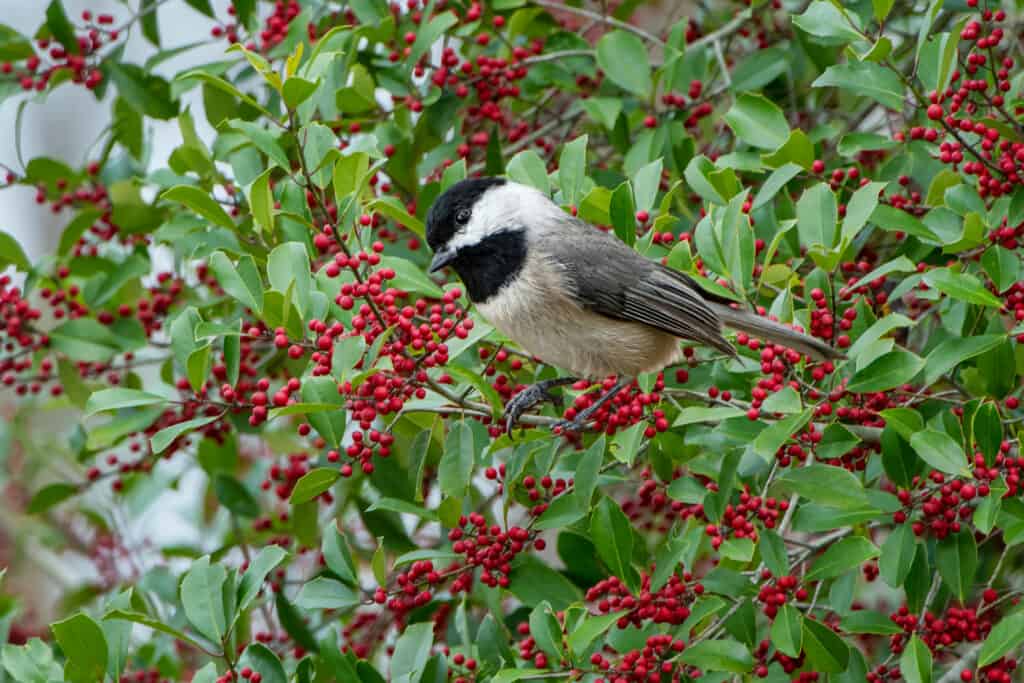
Birds love flocking to American holly trees.
©Bonnie Taylor Barry/Shutterstock.com
Vegetables and flowers are not the only items you can plant in November. Consider adding a new tree to your landscaping before the first hard freeze. One great choice is American Holly. This beautiful plant is considered a tree by many and a shrub by others. As long as you leave ample space for it to grow, you can call it whatever you prefer.
7. Japanese Maple
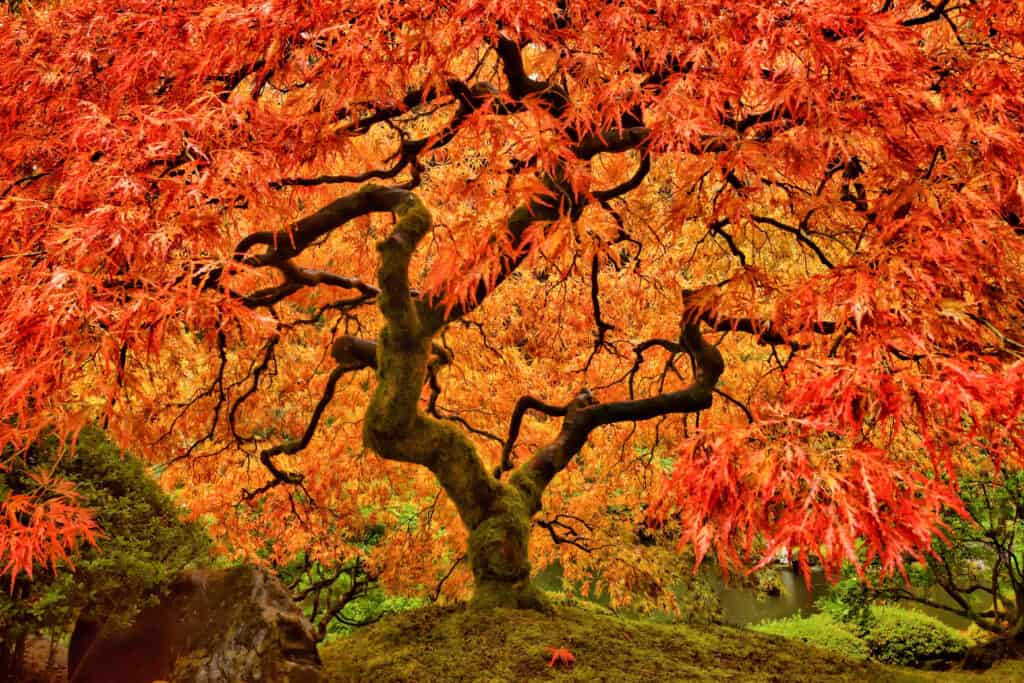
Japanese maple trees showcase stunning foliage every year.
©Paula Cobleigh/Shutterstock.com
Are you ready to add a striking focal point to your yard or garden? Planting a Japanese Maple will help you achieve that goal. The shocking and varying foliage colors will put a smile on your face year-round. And thankfully, the best time to plant this amazing tree is in the fall. Doing so will ensure it has a long (and cold) period to establish a deep and sturdy root system. You will want to add a thick layer of mulch around the base to help protect against deep freezes, however.
8. Kale
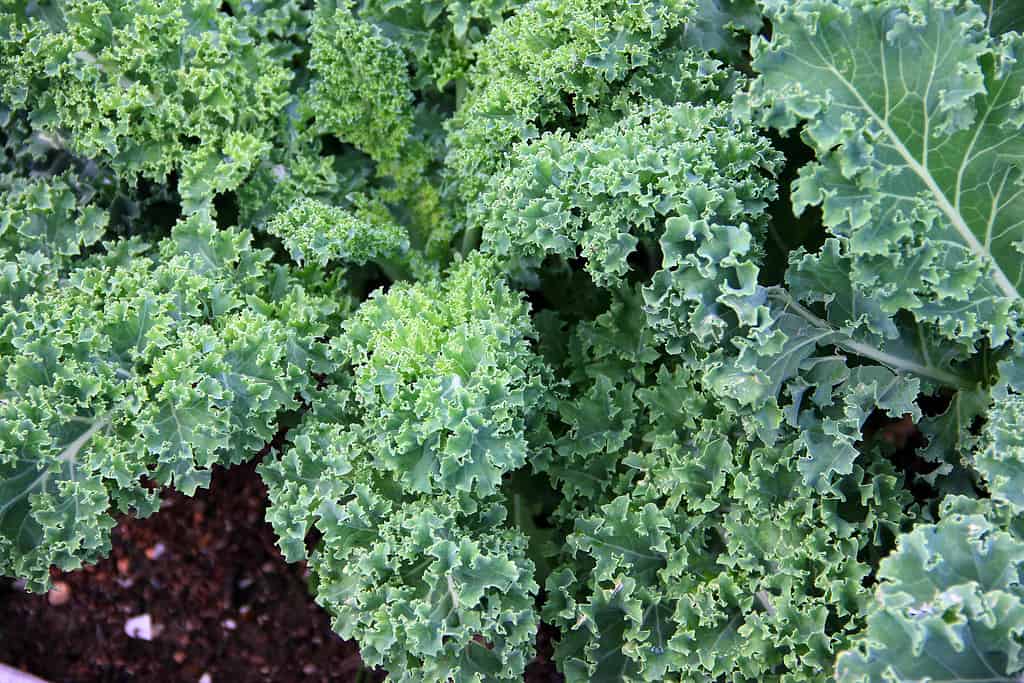
Kale thrives in colder weather.
©/ via Getty Images
One of the best things to plant in November is kale. This hearty vegetable can handle plenty of colds and even some snow. It thrives in cooler weather and does not mind hard freezes. As long as you directly sow the seeds before the ground freezes, you will reap the reward of a long harvest. Kale stores extremely well, so don’t worry about planting too much. Additionally, if you have an unexpected deep freeze in the forecast, you just need to toss a frost blanket over these vegetables.
9. Poppies

Plant annual poppies in November to experience beautiful spring blooms.
©Megs Lang/Shutterstock.com
While poppies are an annual rather than a perennial, they can also get planted in November. It will help give your garden a spring jumpstart! The seeds can get directly sowed into the ground before it freezes. Make sure to follow all the planting instructions, as there will be less sunlight and heat to promote germination. Then, get ready to enjoy the beautiful blossoms in early spring.
10. Rhubarb
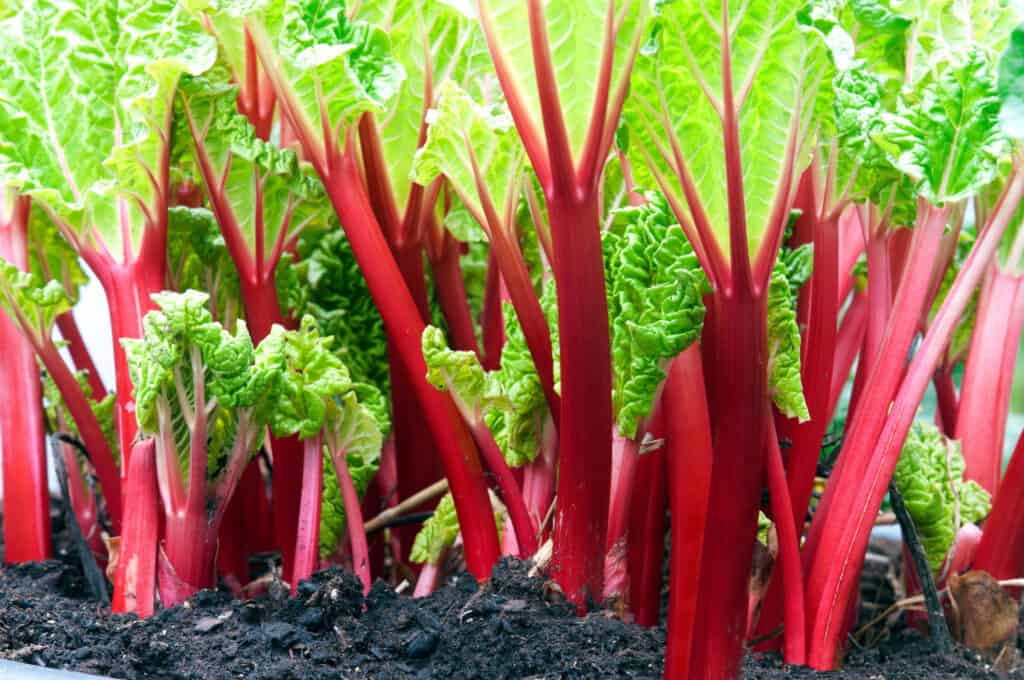
Plant rhubarb in November to ensure an abundant spring harvest.
©HVPMdev/Shutterstock.com
A delicious addition to any garden is rhubarb. This colorful fruit is packed with nutrition and makes delicious jams and pies. However, you don’t actually want to plant it in the summer. The best time of year for rhubarb planting is during colder weather. And that means spring or fall! So, it makes a solid choice to plant in November. If you live in a much colder climate, you may consider adding a cold frame over it or using a frost blanket to protect against freezes.
11. Snapdragons
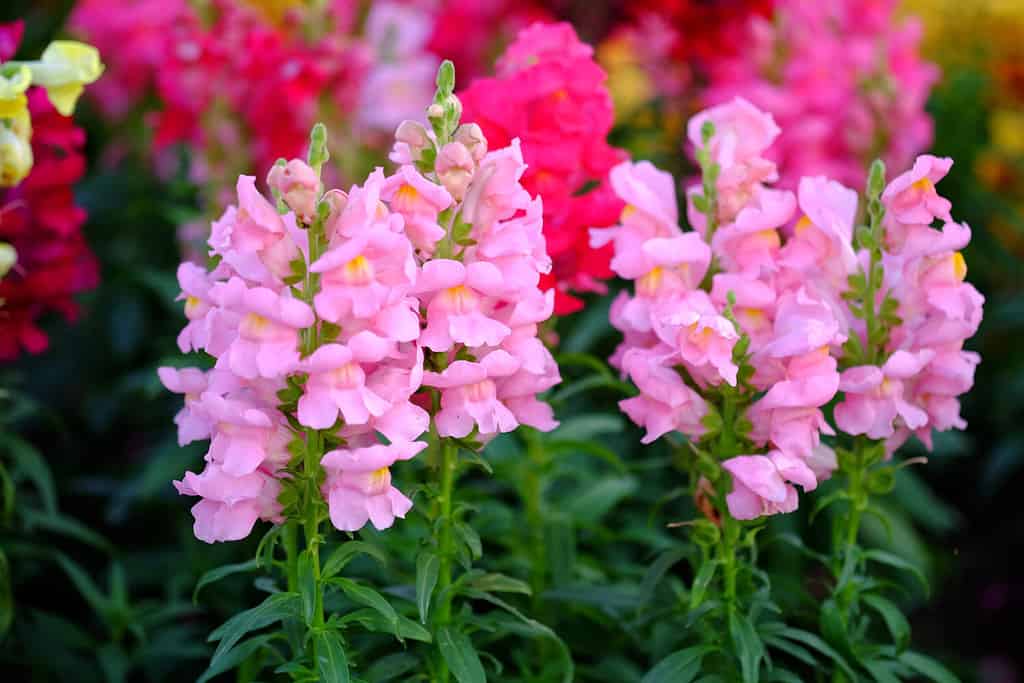
Snapdragons can tolerate cooler weather and can get planted in November gardens in specific regions.
©Nualanong/Shutterstock.com
While snapdragons are not suitable for November planting everywhere, those who live in milder climates can easily plant these beautiful flowers in the fall. As long as they get in the ground before the first frost, they have a shot at getting established. Established snapdragon plants (and seeds) can withstand frosts and some freezes. They will then greet you with stunning blossoms the following spring.
12. Spinach
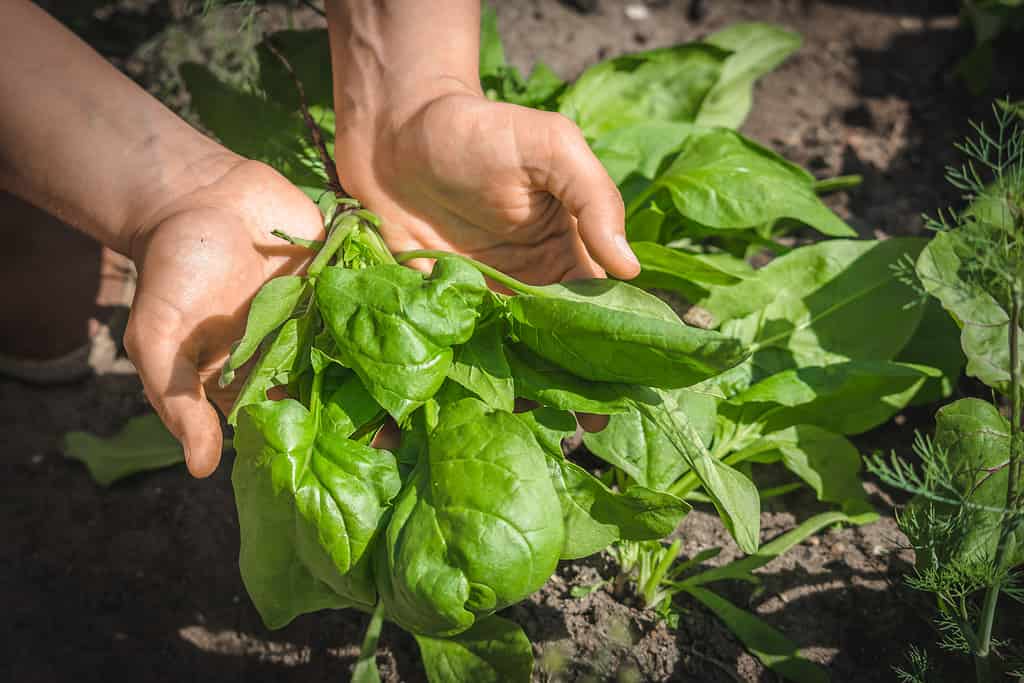
Most garlic varieties are fast-growing and can survive some light frosts.
©alicja neumiler/Shutterstock.com
This flavorful and popular green is cold-hardy and actually does better when not getting bombarded with high heat. You can directly sow its seeds anytime before the ground freezes. And with several tasty varieties to choose from, you can fill your garden. Feel free to plant as much as you want. This versatile vegetable freezes and dehydrates like a dream. Most varieties are fast-growing and can survive some light frosts. So, you can get a solid harvest before winter finally settles in.
13. Thyme
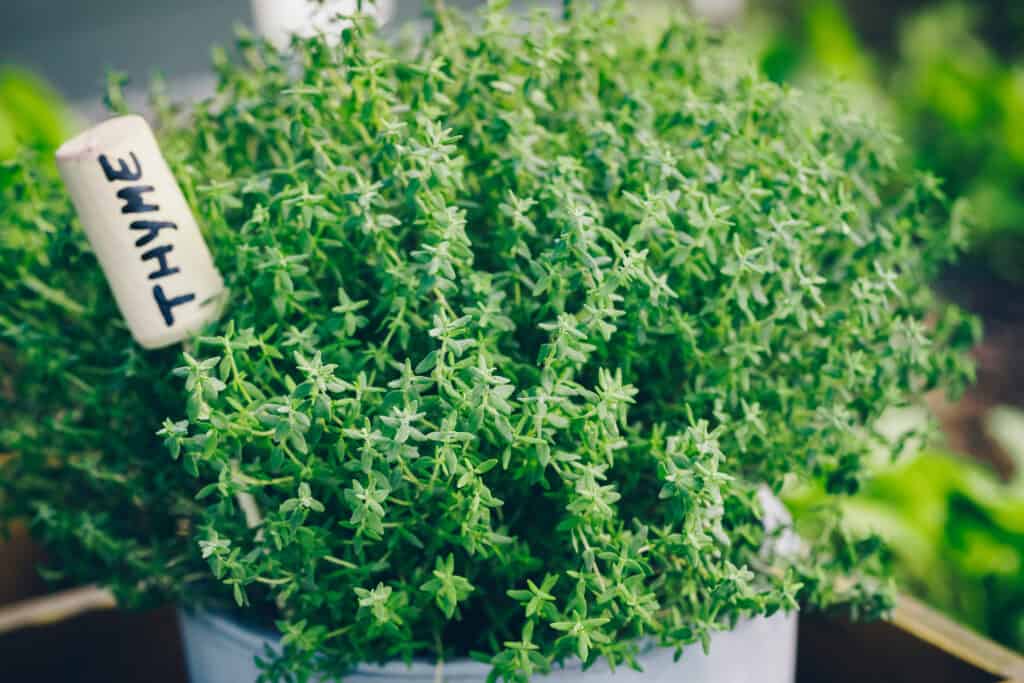
Thyme can thrive in multiple climates and makes a fantastic addition to November gardens.
©iStock.com/wmaster890
An underutilized culinary herb is thyme. So, what better time to explore growing it than this fall while your garden has extra space? Those who live in USDA Hardiness Zones 5 to 9 can plant this herb nearly year-round outside. If you live in a colder climate, you will likely want to include it in your indoor herb garden. And those in warmer climates will have no issues planting it outside in November. Thyme is fantastic in several culinary applications, has medicinal value, and stores exceptionally well.
14. Tulips

Tulips require a period of cold stratification to properly develop.
©dreakrawi/Shutterstock.com
Tulip bulbs need to go in the ground in the fall, so they are an ideal choice for what to plant in November. These stunning flowers require a period of cold stratification to properly develop. As long as you plant the bulbs before the ground freezes, you can anticipate a lovely flower garden in the spring.
Summary of 15 Things to Plant in November
| Number | Plant | Type |
|---|---|---|
| 1 | Beets | Vegetable |
| 2 | Blueberries | Fruit |
| 3 | Broccoli | Vegtable |
| 4 | Carrots | Vegetable |
| 5 | Garlic | Vegetable |
| 6 | Holly | Tree |
| 7 | Japanese Maple | Tree |
| 8 | Kale | Vegetable |
| 9 | Lettuce | Vegetable |
| 10 | Poppies | Flower |
| 11 | Rhubarb | Fruit |
| 12 | Snapdragons | Flower |
| 13 | Spinach | Vegetable |
| 14 | Thyme | Herb |
| 15 | Tulips | Flower |
The photo featured at the top of this post is © Heynicepictures/Shutterstock.com
Thank you for reading! Have some feedback for us? Contact the AZ Animals editorial team.






